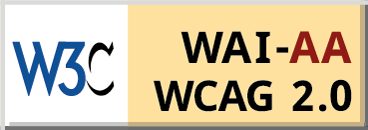Absorption of Emerging Technologies in Armed Forces
Critical and Emerging Technologies have become essential components in the modern warfighting domain.
- Akshat Upadhyay
- March 01, 2023
Critical and Emerging Technologies have become essential components in the modern warfighting domain.
Defence of India is a multi-dimensional responsibility involving coordination with not only organisations within MoD, but also several external departments and agencies. Irrespective of whether the subject of defence of India is assigned to DoD or DMA, it is the defence minister who is responsible for the subjects allocated to the ministry.
Unless the armed forces and the security establishment take a singular approach to warfighting, which includes evolving a singular concept of warfighting, identifying threats and challenges, and medium and long-term capability development goals, differences that make headlines will continue to recur time and again.
The ongoing military reforms began with the appointment of the Chief of Defence Staff (CDS) and creation of the Department of Military Affairs. Future changes are likely to include the creation of theatre commands, functional commands, restructuring of Army Headquarters and a number of other associated shifts in conjunction with these big bang reforms.
It would not be an exaggeration to say that these changes are perhaps the most far-reaching military reforms in India’s post-independence history.
The book undertakes a focussed assessment of the changes that commenced with the appointment of CDS. This includes the role and inter-se co-relation between major stake holders and defence departments. Keeping in view the need to enhance operational effectiveness, recommendations regarding the chain of command, rank structures and role of service chiefs have been made. The book will also analyse the structure and role of the future Air Defence and Logistics Command.
Banning the sale of imported items through the CSD could supplement the various domestic industry-friendly policy measures being taken by the government for a self-reliant India.
India needs to have a public version of defence manpower database as part of its annual budgetary document. This would facilitate greater understanding and analysis of any possible manpower-related reforms in the future.
The armed forces are one of the most powerful tools to ensure safety and security of the state from external aggressions. This duty may call upon armed forces personnel to undertake missions with a very high risk to life. To motivate a human being to perform the allocated duty even at the peril of his/her life is an art that armed forces across the globe have mastered. For sustaining such a high level of motivation and to undertake missions in a very organised fashion, military discipline is a key attribute.
The adverse impact of lowering of colour service of soldiers below pensionable service will not only be felt at the structural and functional level but also the psychological level.
Having decided to create the post of CDS, the next logical step for the government is to define its charter of duties and responsibilities. The government needs to examine not just the CDS’s role as a single-point military advisor, but also his role in other matters that are equally important in driving critical defence reforms.
At the heart of ethical choices lies the complex interplay between individual intentions and environmental vectors. Factors such as stress, misguided motivations and the failure to handle positional power make the issue so very intriguing. Further, ethical dilemmas are often laden with inherent individual subjectivities, making it difficult to arrive at a singularly agreeable distinction between ‘right’ and ‘wrong’. Why do individuals transgress? Why do individuals give and take bribes? Why is it so difficult to report a course mate?



